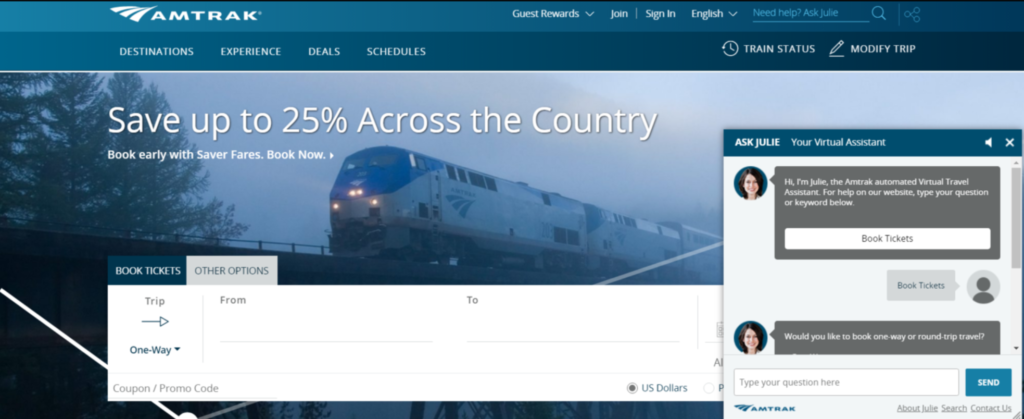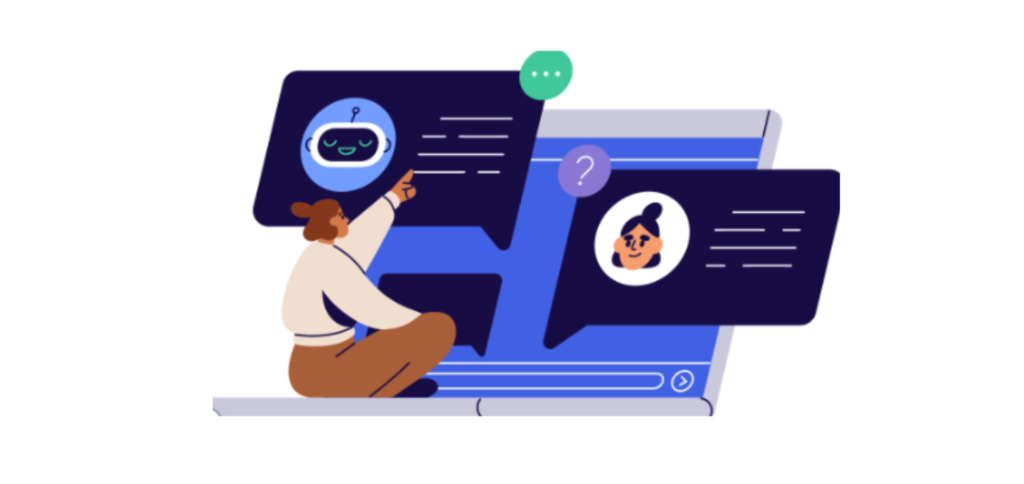In today’s rapidly evolving digital landscape, customer engagement lies at the heart of building a successful online presence. While live chat has already proven its worth as a means to connect with a broader audience, the integration of AI-powered bots can revolutionise customer engagement strategies, taking brands to unprecedented heights across various platforms and interactions.
AI-bots can take various forms, including chatbots, web-bots, social media bots, virtual assistants, and more, each serving specific purposes in different contexts and platforms.
Chatbots: Chatbots are perhaps the most well-known type of AI-bots. They are designed to simulate human conversation and can interact with users through text or speech. Chatbots can be deployed on websites, mobile apps, messaging platforms, and social media channels, providing instant support, answering FAQs, guiding users through processes, and engaging customers in personalised interactions.

Web-bots: Web-bots, also known as web crawlers or web robots, are AI-powered bots used to automate web-related tasks. They can navigate websites, extract data, and index content for search engines like Google. Web-bots play a vital role in web scraping, data mining, competitive analysis, and staying up-to-date with market trends. Here are some examples of web-bots:
- Search Engine Crawlers: Search engines like Google, Bing, and Yahoo use web-bots to crawl websites and index their content, making it searchable for users.
- Web Scrapers: Web scraping bots extract data from websites, such as product details, contact information, or user reviews, for various purposes, including market research and lead generation.
- SEO (Search Engine Optimisation) Bots: These bots analyse websites for SEO purposes, checking for broken links, duplicate content, and other factors that affect search engine rankings.
Social Media Bots: Social media bots, sometimes referred to as social bots or social chatbots, are AI-bots that operate on social media platforms. They can automatically post content, respond to comments, engage with users, and analyse social media trends. Social media bots can help businesses maintain an active presence on multiple platforms and facilitate social media marketing efforts.
Virtual Assistants: Virtual assistants, like Siri, Alexa, and Google Assistant, are AI-powered bots designed to perform tasks and answer questions through voice interactions. They can set reminders, provide weather updates, control smart home devices, play music, and more. Virtual assistants rely on natural language processing (NLP) to understand and respond to user commands.

AI-Powered E-commerce Bots: AI-bots are also used in e-commerce settings to personalise user experiences, offer product recommendations, and assist with online shopping. These bots leverage user data and historical behavior to provide tailored suggestions and increase customer engagement.
The power of AI-bots lies in their ability to continuously learn from interactions and improve their performance over time.
How do AI-powered bots improve customer engagement?
- Identifying Pain Points and Enhancing User Experience: In the realm of web-bots and chatbots, AI-powered interactions enable real-time engagement with visitors, allowing businesses to identify pain points and areas causing difficulties or frustrations. Armed with this knowledge, organisations can promptly address these issues, optimising website usability, and leading to higher customer satisfaction and retention rates.
- Unveiling Product Interests and Customer Preferences: Whether it’s a chatbot on a website or a social media bot interacting with users, AI-powered bots can discern customer preferences and interests through every interaction. Understanding these preferences enables businesses to tailor their offerings, marketing messages, and product development to match specific customer needs effectively.
- Empathising with Customers – Addressing Questions, Concerns, and Objections: In the realm of technology, empathy plays a crucial role in customer satisfaction. AI-bots, such as chatbots and social media bots, serve as direct channels for customers to voice their questions, concerns, and objections. The ability to address these issues promptly and effectively showcases a brand’s commitment to exceptional customer service, thereby solidifying the brand’s reputation.
- Analysing Persuasion Tactics – Refining Your Approach: AI-powered bots, provide valuable insights into the effectiveness of persuasion tactics. Organisations can analyse which responses, reassurances, or counter-arguments resonate most with their audience, influencing users to take further action. Armed with this knowledge, businesses can fine-tune marketing messages, optimise calls-to-action, and craft compelling content that compels visitors to convert into valuable leads or loyal customers.

The implementation of AI-powered bots offers a cost-effective solution compared to hiring additional customer service representatives, especially for smaller businesses. The initial investment in chatbot or web-bot technology pays off quickly with the increased efficiency and higher customer satisfaction it brings.
Common UX Problems with AI-Bots
As businesses harness the power of AI-bots to enhance user experiences, it’s essential to be mindful of potential pitfalls. While a well-designed and strategically placed AI-bot can offer numerous benefits, a poorly executed one has the potential to cause twice the damage. Here are some common UX problems that AI-bots, including chatbots, web-bots, and social media bots, often encounter:
- Language Complexity: Not all AI-bots are created equal, and many may struggle to fully comprehend the intricacies of human language. This limitation becomes particularly evident in customer service AI-bots, where users frequently provide detailed explanations of their issues. The bot’s inability to grasp the user’s intent may lead to confusion or misdirection, resulting in a frustrating experience for the customer.
- Strict Scripts and Lack of Flexibility: AI-bots, especially chatbots, may be designed with strict scripts, lacking the flexibility to adapt to various scenarios beyond their pre-defined flow. Users may express their questions or needs using different phrasings, but bots often respond solely to specific keywords, resulting in a failure to understand the users’ intent fully. Consequently, users might be led down unnecessarily lengthy paths to find the answers they seek.
- Slow Page Load Times: Incorrectly implemented AI-bot scripts can adversely affect website loading times, especially in the case of web-bots or chatbots integrated into webpages. Given the paramount importance of site speed in delivering a positive user experience, even a mere one-second delay could prompt users to abandon the website in favor of competitors.
Before diving headfirst into AI-bot implementation, businesses must pause and carefully consider whether it aligns with their specific needs. Whether you’re considering chatbots, web-bots, or social media bots, a well-designed and thoughtfully executed AI-bot can work wonders for conversion rates and customer engagement. Conversely, a poorly executed AI-bot, plagued with UX problems, may prove to be more detrimental than beneficial, eroding trust in your brand and leading to missed business opportunities.
The success of AI-bots hinges on two critical factors: the context of your product or service and the design of the AI-bot itself. Understanding how AI-bots align with your business goals and user expectations is paramount. AI-bots should ideally complement existing customer support channels and provide value in unique ways that resonate with your target audience.
Before deploying AI-bots, invest time and effort in thorough planning and research. Understand your target audience’s preferences and pain points, and use this knowledge to design AI-bots that resonate with them. Conduct user testing to gather feedback and refine the AI-bot’s performance iteratively. With the right approach and thoughtful execution, AI-bots can elevate user experiences, strengthen brand reputation, and foster lasting connections with your audience in the dynamic world of artificial intelligence.


